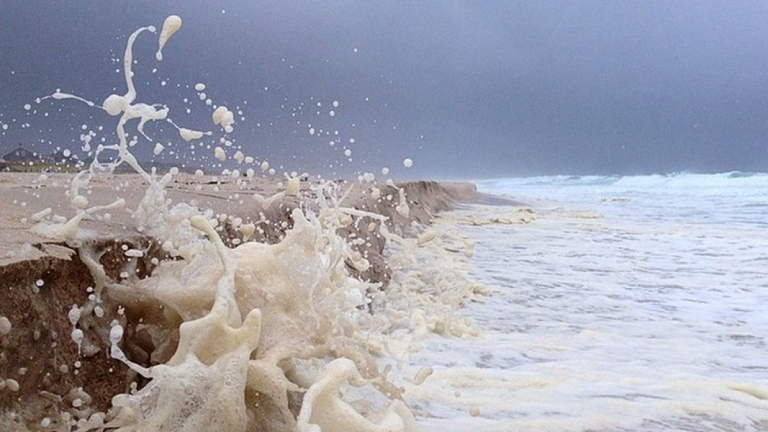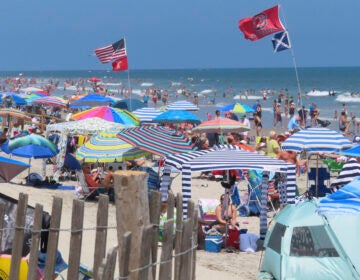Rip current risk increases this weekend as Hurricane Isaias tracks northward
Beachgoers at the Jersey Shore will likely face dangerous rip currents this weekend and early next week as Hurricane Isaias tracks northward, forecasters say.

A 2014 photo from South Seaside Park. (Justin Auciello/WHYY)
Beachgoers at the Jersey Shore will likely face dangerous rip currents this weekend and early next week as Hurricane Isaias tracks northward, forecasters say.
Wave heights and strength will gradually increase on Saturday and significantly spike on Sunday, according to the National Weather Service office in Mount Holly.
Forecasters are monitoring the potential impacts of Hurricane Isaias on New Jersey.
“Depending on the track, this storm could affect the region by around the late next Monday into Tuesday timeframe. However, both the timing and track remain uncertain as the storm is still far to our south over the Caribbean at this time. Needless to say, this will need to be watched closely,” the forecasters from the Mount Holly office wrote this morning.
New Jersey is within the National Hurricane Center’s “cone of uncertainty” for potential impacts from Isaias.
Here are the 11 AM EDT 7/31 Key Messages for Hurricane #Isaias as the storm lashes the Turks and Caicos. Conditions deteriorating across the central Bahamas. pic.twitter.com/1qnKgid40c
— National Hurricane Center (@NHC_Atlantic) July 31, 2020
Rip currents are powerful channels of water that flow quickly away from the shore, often occurring in low spots or breaks in the sandbar and in the vicinity of structures such as groins, jetties, and piers.
How to identify a rip current:
- A channel of churning, choppy water
- An area having a notably different color of water
- A line of foam, seaweed or debris moving steadily seaward
- A break in the incoming wave pattern
If caught in a rip current, NOAA advises:
- Stay calm.
- Don’t fight the current.
- Escape the current by swimming in a direction that follows the shoreline. When free of the current, swim at an angle — away from the current — toward shore.
- If you are unable to escape by swimming, float or tread water. When the current weakens, swim at an angle away from the current toward shore.
- If at any time you feel you will be unable to reach the shore, draw attention to yourself: face the shore and call or wave for help.

Get daily updates from WHYY News!
WHYY is your source for fact-based, in-depth journalism and information. As a nonprofit organization, we rely on financial support from readers like you. Please give today.




